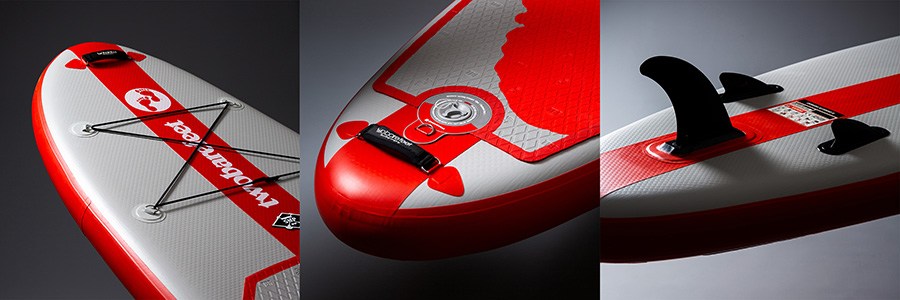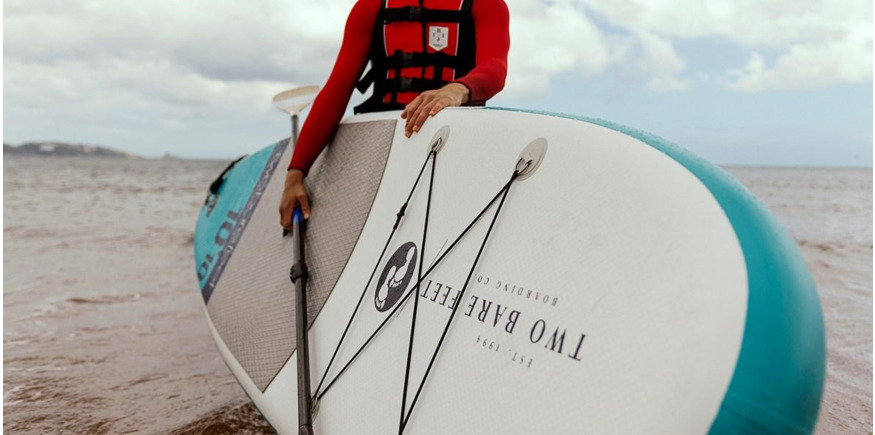Best Intermediate Paddleboard
There comes a stage for a lot of enthusiastic paddleboarders when your current SUP just doesn’t cut it. You’ve outgrown that beginner board in terms of ability and need something that you can continue to progress on.
You also may be confident enough in your balance thanks to experience in other board sports that you’re happy enough to skip beginner boards and go straight to something with a little more performance. But what makes a good intermediate board as opposed to a beginner sup board? Read on…
Why would you want an intermediate stand-up paddleboard?
There are many reasons for choosing a slightly more advanced board and many benefits they can offer. An intermediate level paddleboard will provide increased performance: namely, agility and speed. These attributes allow a paddler to progress their riding further by offering a better platform to practise new manoeuvres: pivot turns, reverse paddle turns, etc.
Typically, an all-round intermediate board will also be more suited to a wider variety of conditions. For example: the improved agility and speed will help riders navigate a line-up more easily to catch waves, and also manoeuvre on white-water river sections if that’s the type of paddling you are interested in.
What makes a good intermediate paddleboard?
So, you may be thinking, why are they faster, more agile and more high-performance? Well, this comes down to a number of design elements. The dimensions of a paddleboard (length, width, thickness) will make a huge difference to the way it performs.
Elsewhere, the materials used are often superior to those in a beginner board as increased stiffness and rigidity massively improves the performance capabilities of an inflatable stand up paddleboard. This can include the layers used on the PVC skin, the way they are fused together, the make-up of the weave inside the air chamber, as well as any additions on the deck such as stiffening strips.

Dimensions for an intermediate SUP
The dimensions of the stand-up paddleboard you choose will depend on your weight first and foremost as you need to ensure that the board has enough volume to comfortably float you (see our SUP size guide). Beginner paddleboards are often wide, long, thick and have a huge amount of excess volume to give new riders a really easy platform to learn on.
Intermediate paddleboards will walk a finer line in terms of extra available volume to float yourself and any additional gear, so bear this in mind when choosing: you want a board with less volume as this essentially equals higher performance capabilities, as long as it is suitable for you.
A lower volume board is achieved by simply making it smaller and these cuts often happen from each of the three measurements. A narrower deck will greatly improve speed and agility as there is less drag but it will also compromise stability. If your weight allows, you can also choose a board that is thinner and shorter which will make it much more agile.
The differences from a beginner board to an intermediate board don’t stop just at those three key dimensions however. Their templates will differ, that is to say, their outlines. Beginner boards will often be round through the nose and tail to increase stability, whereas an intermediate board will afford a narrower nose and tail to further increase speed, agility and give a lighter feel.

At Two Bare Feet, our intermediate boards come in standard and XL options, so you can still experience the benefits on an intermediate board outline without downsizing on length and thickness if you are a heavier rider. For example, our 2020 Archer SUP range features a 10’6” x 33” x 4.75” as well as a 10’10 x 33” x 6” model.
Materials for an intermediate SUP
Spending more on an intermediate board will also offer better quality materials which will increase performance. Our best-selling Inviato SUP for example, features a single layer of reinforced PVC which is perfectly capable for anything a beginner paddler can throw at it. However, for those looking to improve their skills, the rigidity of a SUP is key.
A stiffer board makes it more capable for specific types of turns as well as faster and more responsive to your movements. Our Archer range of SUPs are constructed with ultra-lightweight DWF double wall PVC, as well as stiffening strips. These strips run from nose to tail on the deck and underside of the board, increasing the tensile strength and rigidity of the SUP.
Your SUP paddle is important too…
Don’t overlook your paddle when moving into the intermediate category. Upgrading boards will obviously make a huge difference, but if you really want to experience a step up from your old SUP gear, a lighter, stronger paddle will make a massive difference.
Less weight means you can paddle for longer without becoming tired. Added strength in the shaft and blade of the paddle will also make your strokes much more effective, as less energy is lost through the paddle flexing.
Our carbon hybrid and full carbon pro paddles offer a significant upgrade from standard aluminium and you’ll feel the benefits as soon as you take the first few strokes.
We hope that gives you a good outline as to what you are looking for in an intermediate SUP. Should you need any further advice, please don’t hesitate to contact our customer service team who will gladly point you in the right direction.




